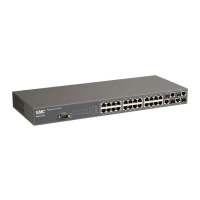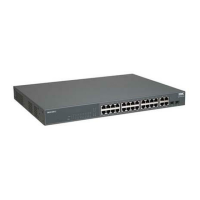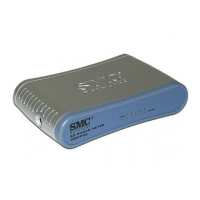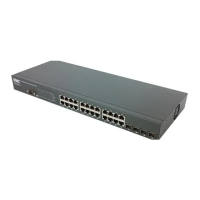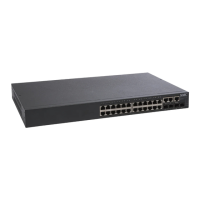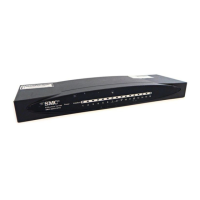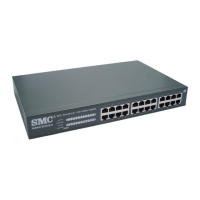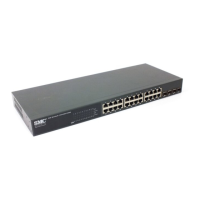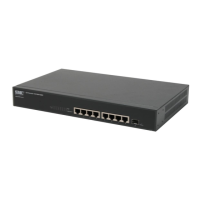P
RIORITY
C
OMMANDS
(L
AYER
2)
31-3
(WRR) queuing that specifies a relative weight of each queue. WRR
uses a predefined relative weight for each queue that determines the
percentage of service time the switch services each queue before
moving on to the next queue. This prevents the head-of-line blocking
that can occur with strict priority queuing.
Example
The following example sets the queue mode to strict priority service mode:
Related Commands
queue bandwidth (31-4)
show queue mode (31-7)
switchport priority default
This command sets a priority for incoming untagged frames. Use the no
form to restore the default value.
Syntax
switchport priority default default-priority-id
no switchport priority default
default-priority-id - The priority number for untagged ingress traffic.
The priority is a number from 0 to 7. Seven is the highest priority.
Default Setting
The priority is not set, and the default value for untagged frames
received on the interface is zero.
Command Mode
Interface Configuration (Ethernet, Port Channel)
Command Usage
• The precedence for priority mapping is IP Port, IP Precedence or IP
DSCP, and default switchport priority.
• The default priority applies for an untagged frame received on a port
set to accept all frame types (i.e, receives both untagged and tagged
Console(config)#queue mode strict
Console(config)#
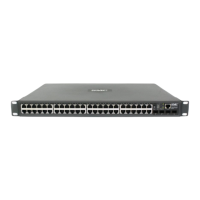
